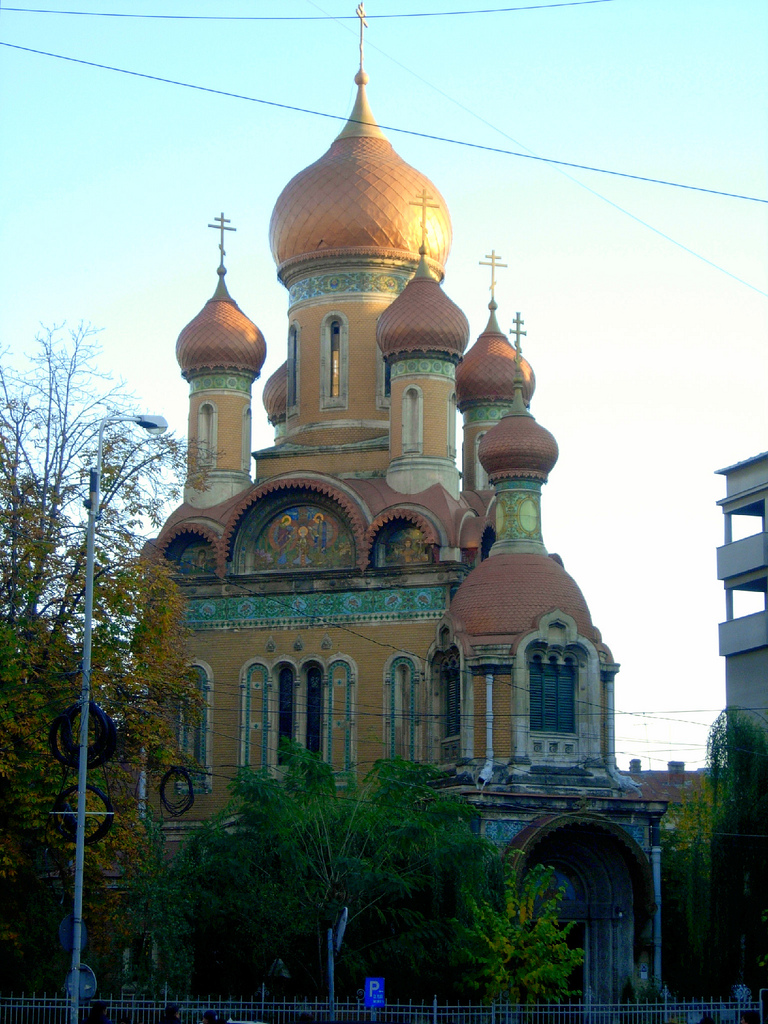Description
From: Bucharest, Russian Orthodox church
Adress: Strada Ion Ghica 7, București 030167
Located near the University, the Russian Church was built in 1905-1909 at the behest of Tsar Nicholas. The seven Russian-style cupolas were originally covered in gold leaf. The church served the Russian Embassy. In 1934, at the request of Minister Nicolae Titulescu, the Soviet Union donated the church to Bucharest University. It was restored to the Russian state after the World War II, and was donated to the Romanian Orthodox Church ten years later. Since 1992, it has been the Students’ Church.
The church has a square plan, the entrance is on the northwest corner, towards the street, so that the altar, semicircular, is oriented to the east. The general dimensions are 19,60 x 18,40 m with massive walls; the height of the tower is 19 m. The nave is inscribed in the form of a cross with equal arms, completed by compartments designed to increase the space or the arrangements necessary for worship, everything being expressed in the volumes of the facade. It is covered by a raised central vault, which presents pendants supported on consoles in the four corners. A cylindrical drum, with the diameter thus reduced, supports the bulbous dome of the spire.
On the corners of the nave, 4 smaller towers surround the central spire. The entrance is marked by a strong decrosted body, crowned by another tower finished in the shape of a bulb. A seventh tower, of the same design, with a larger drum rises above the altar. The light enters the nave on four sides, through two oblong windows.
The facades inspired by Russian and Georgian examples, made with apparent yellow-pink brick, are richly ornamented, with ceramic friezes, mosaics under the arches and stone-carved decorations. The interior oil painting, with an area of 1,500 square meters, executed by the painter Vasiliev, is in the style of old Byzantine paintings or Athonite painting (cultivated by the monks of Mount Athos), emphasizing the beauty of the monument. It is currently undergoing restoration.
